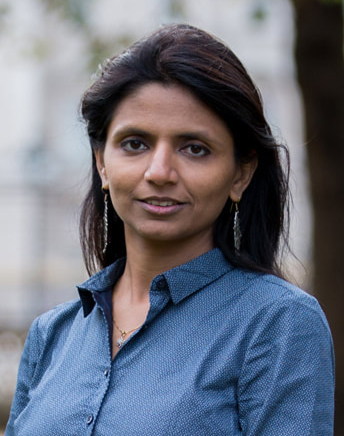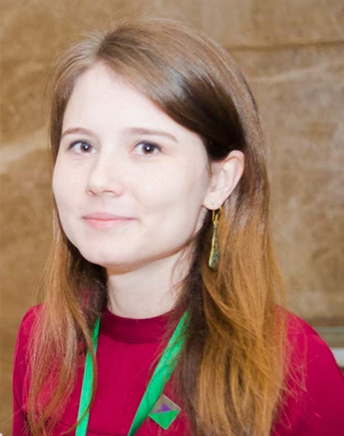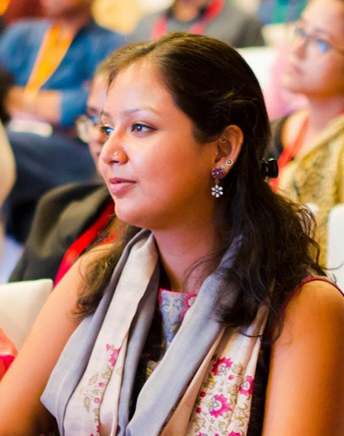A US$2.5 trillion funding gap is one of the primary obstacles to overcome in order to achieve Sustainable Development Goals by 2030. While contributions through traditional financing methods are declining, funds generated through innovative finance models are on the rise. Innovative finance (IF) is broadly defined as a financing mechanism that taps into new revenue, utilizes new approaches, or leverages new incentives.
There are several examples of innovative financing mechanisms that are currently underway in developing markets. One of the recent instruments from the primary education space is the Quality Education India Development Impact Bond (DIB), launched in September 2018. The $11 million DIB aims to improve the quality of literacy and numeracy for over 100,000 students across 600 schools and has been able to unlock outcome funding from development finance institutions, private foundations and family offices to match the risk investment provided by investors.
Focus on the End User

As we evaluate the potential of innovative financing mechanisms to contribute to financing global development solutions, especially those that are complex and local in nature, we often gloss over who the solution is intended for. A lot of time, effort and resources are spent over designing perfect solutions for directing financial products to deliver impact most efficiently, but the voice of the end user – customer or beneficiary – is the least heard.
The starting point for all such discussions must be the key challenges that vulnerable communities face and whether existing financial mechanisms address their needs. For example, existing credit solutions for smallholder farmers often result in financial dependence on lending institutions, rather than self-sufficiency.
In countries like India, as in most developing regions, vulnerable communities need resilience and economic growth. Integrated and contextualized financial products are seldom, if at all, available for them. These products are usually designed from the supply side perspective to cater to the milestones, goals, targets, return expectations, impact that a donor, funder or investor expects.
No Business Case Without Rigorous Data and Evidence
Contextual challenges and poor evidence affect their efficacy as well as stakeholder engagement. Trust deficit between community and ecosystem players (implementing agencies, intermediaries or funders), as well as existing behavioural practices, hinder the ability to effectively deliver and engage. For example, consider the attitudinal challenges involved in rural communities with low awareness, in buying insurance products. For them, purchasing insurance is like buying a commodity rather than pooling risks, which makes them less willing to use it.
Knowledge and capacity constraints in the sector is a key barrier to the effectiveness of innovative financial products. There is limited awareness on legal/regulatory frameworks, low technical expertise in designing products by teams that work with communities and vice versa, an absence of context and real challenges of the end user by the experts who design products.
There is also a case to be made for more rigorous and transparent collection and analysis of data and evidence. Without this there is no real basis to assess the impact of and the business case for innovative financing products.
Creating Responsive Mechanisms for Innovative Finance
In order to address above challenges, we propose a few approaches that circle around the need to design and adapt need-based innovative financing products, address the trust deficit in the ecosystem, positively influence behaviours of community and ecosystem, and demonstrate the business case and impact on communities.
- Create innovative financial products on a foundation layer of mutual, solidarity-based models that are driven by community needs and aspirations.
- Pilot them in a smaller, controlled environment.
- Fine-tune and scale-up insurance and risk-reduction products, given that they are preventive in nature rather than remedial. This is a sound principle when designing or piloting products for particularly vulnerable communities.
- Results-based financing has tremendous potential in widening the funding funnel for complex programmes, however supply side stakeholders must take on the responsibility of building greater awareness, facilitating knowledge exchanges, and insisting on transparency in sharing data and evidence.
- Appropriate technology integration at every phase of design and implementation will improve access to products and eventually bring down costs.
Emergence of Innovative Finance
In recent times, innovative finance (IF) as a concept has caught the fancy of the development sector not just in India but globally, as well. And rightly so, in a sector which prides itself on the innovative approach and market it serves, very little real “innovation” has really happened in the past two decades, since the advent and proliferation of microfinance. Naturally hence, the term “innovative finance” rings in the promise of bridging the financing gap which has chronically ailed this sector with tools and products that go beyond the traditional.
For the uninitiated, innovative finance refers to a range of non-traditional mechanisms to raise additional funds for development aid or programme financing through innovative mechanisms that may include but are not limited to contractual obligations, impact bonds, debt instruments, micro-contributions, taxes, public-private partnerships and market-based financial transactions.
Innovative financing models have shown potential over the years, however, challenges remain surrounding the scalability and adaptability of innovative finance. Investors are often unwilling to invest in IF programmes considering them fraught with risks, with unclear valuation and impact metrics. Yet, many potential investors are watching the ongoing experiments closely. For example, several IF products that link funding to results are in their early stages, and are being tested in several sectors like education, sanitation and healthcare. If even a few of these meet success (and some indeed are), it is only a matter of time before many new participants from the investor and donor community will be willing to consider IF as a viable alternative to financing development interventions.
Quest for a Perfect Model in an Imperfect Market
Challenges remain, the notable one is of robustly measuring the impact of these mechanisms. It is difficult to attribute success of projects to funding mechanisms, with a limited body of evidence – for example, if a development impact bond is successful, is it because the project was implemented using the DIB model or would it have been equally successful if it was grant funded. There is no standardization of the measurement process of the impact made by innovative financing products and little consensus on how to proceed with evolving existing measurement tools.
Another factor that has limited the scale of innovative financing is a market with imperfect conditions. The market is fragmented, the roles of stakeholders diffused and often undefined, and an emergence of a plethora of innovative financial initiatives, in various stages of maturity. The market, hence, seems very daunting and inaccessible for new entrants. There is no pathway of getting to these innovative finance products. Add to this, there is a lack of a common understanding in the sector of the kind of IF products available and the reasons for choosing one over the other. While several pilots and programs that are currently ongoing utilise innovative finance, the understanding of what works and what doesn’t is very limited.
The Case for a Robust Marketplace
The potential of innovative finance is immense, and it may be the key to unlocking funds required for meeting the SDG funding gap as well as reduce the quantum of funds required to meet SDG goals by making funds more efficient. Given the right kind of support frameworks and a concrete push to the growth of a marketplace, innovative finance can really start moving beyond pilots to large scale and multiple programs, unlock new sources of funding such as CSR, family office and even individuals. This could further lead to fostering collaborations and partnerships and improve financial efficiency.
There are several platforms that are currently filling some of the gaps that exist. One such example is the SDG Finance Facility, being developed by UNDP. The Facility functions as an incubator that will design SDG-aligned financial instruments that crowd-in additional capital to focus on priority development challenges in India.
The time has come for aligning goals and bring multiple stakeholders together to create a vibrant marketplace model that can truly unlock innovative finance potential. The broad contours of an effective marketplace would include but not be limited to a platform that:
- Maps and categorises key stakeholders along with an ability for them to engage and partner with each other.
- Presents datasets of evidence and deep insights.
- Highlights successes and failures, with contextual information.
- Archives of tools, toolkits and specialist organisations building and implementing them.
- Presents legal frameworks around innovative finance products, and how to manoeuvre through it
While the initial objective of such a platform could be to develop a common understanding of innovative finance mechanisms and products in the development sector, and create a space for actors to interact. Once this platform takes off, it has the prospect to evolve into a flourishing marketplace where tool kits can be accessed, risk profiles are available, evaluation mechanisms are accessible, etc.
The marketplace can do many things and eventually build an open environment for greater collaborations, transactions, and innovations, the key is to understand the need for it and that it cannot happen until multiple partners align themselves towards building it.
Only the development of a marketplace like this will finally be able to reduce the information asymmetry that exists currently. Ultimately, this will be what will drive more innovation, action, scale, resources and capital into the innovative finance space and bring greater accountability and transparency into development funding.
Conclusion
When financial products fail to serve community needs it is usually because they are designed from the supply-side perspective. Moving forward, let us ensure that innovative finance products are demand-driven and serve community needs in the most effective way.
During design and implementation additional attention needs to be paid to how these products can address behavioural practices and trust deficit. To utilise innovative financial products to their full potential, it is key to address the gap between knowledge and capacity for both design and deployment.
One challenge prevalent across the continuum of innovative financing products is the ability to scale. There is a sectoral need to address how to move past the proof of concept phase to bring product implementation to scale.
If we can improve availability of targeted, contextualised innovative financial products, strengthen the business case for financial service providers, and improve scalability of pilots, we can hope to achieve resilience, growth and positive outcomes at scale for vulnerable communities.
About Authors

Aparajita Agrawal is an independent advisor for impact investing and entrepreneurship and served as the Chair of the Innovative Finance Track at Catalysing Social Impact 2019.

Catherine Cove is Technical Specialist working in public health research, implementation and health consulting at Swasti.

Arushi Pandey is also a Technical Specialist at Swasti.










Great job on explaining this topic thoroughly. If you want to learn more, click here for supplementary details.